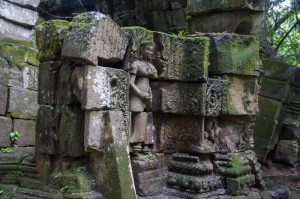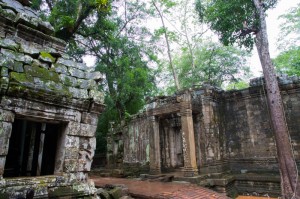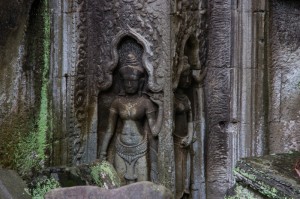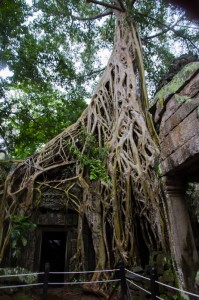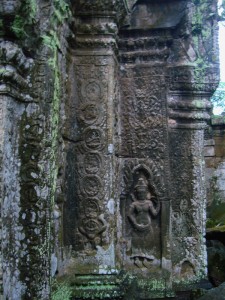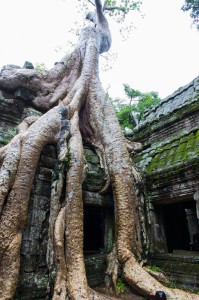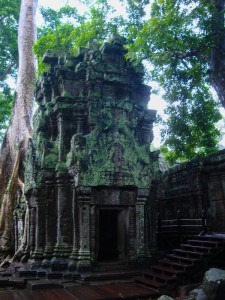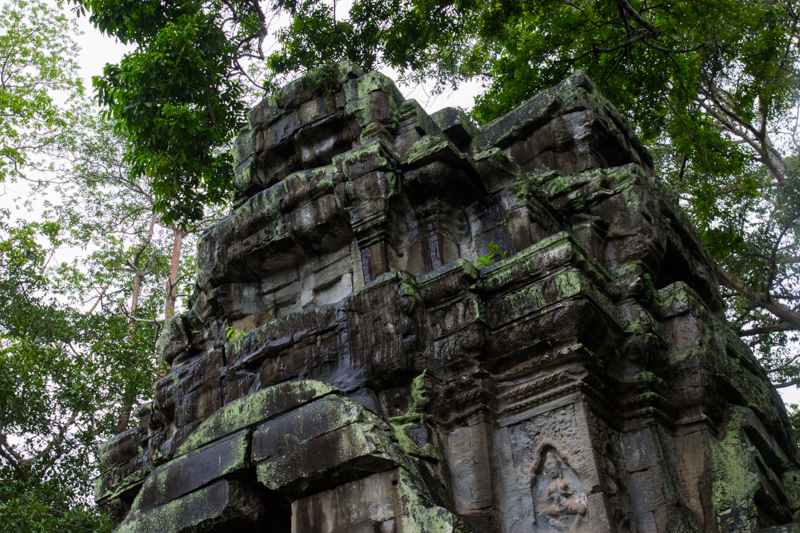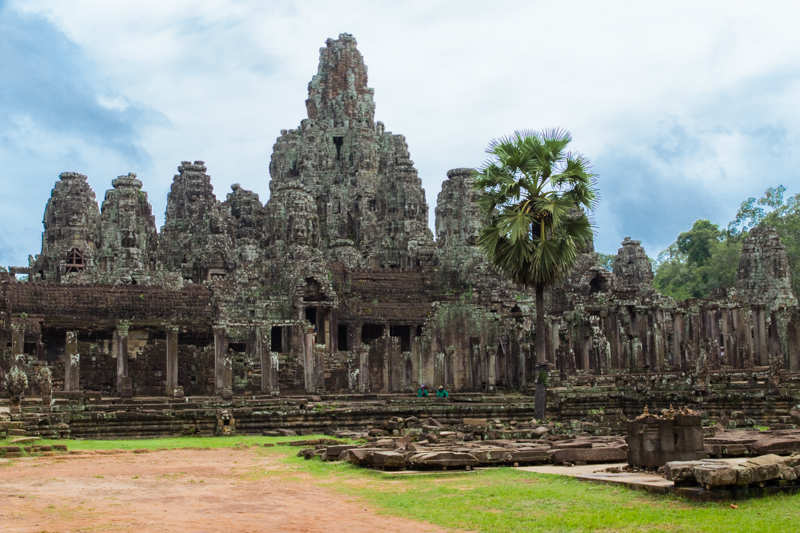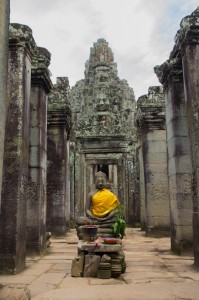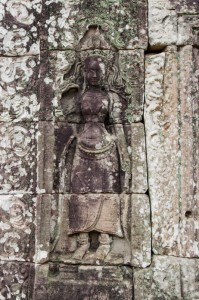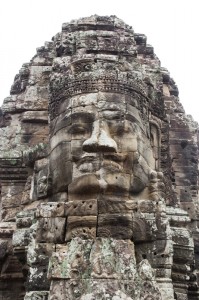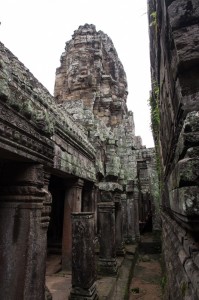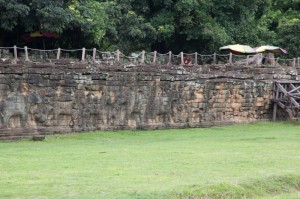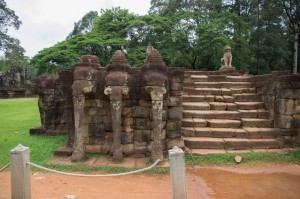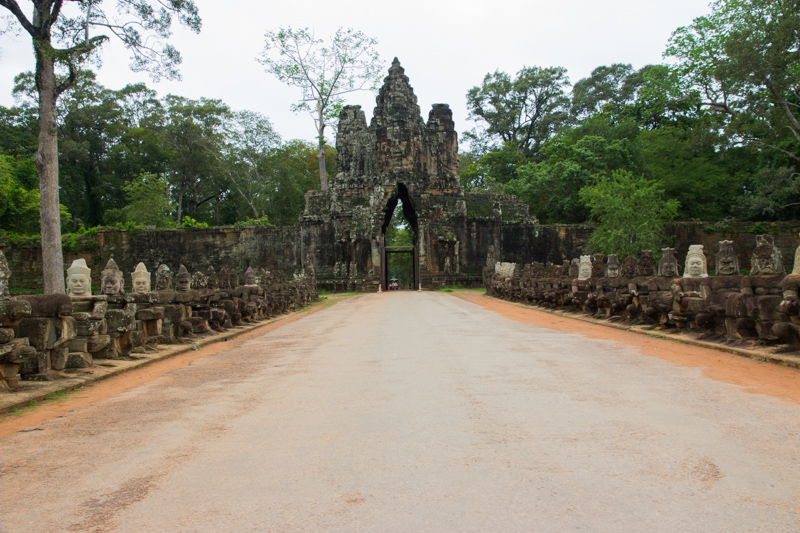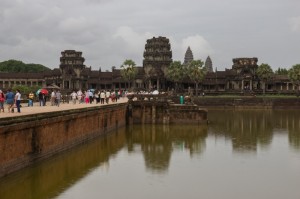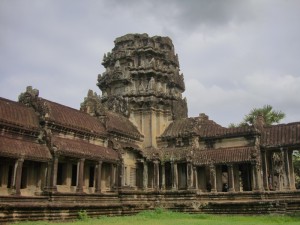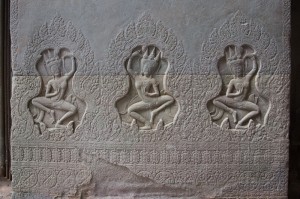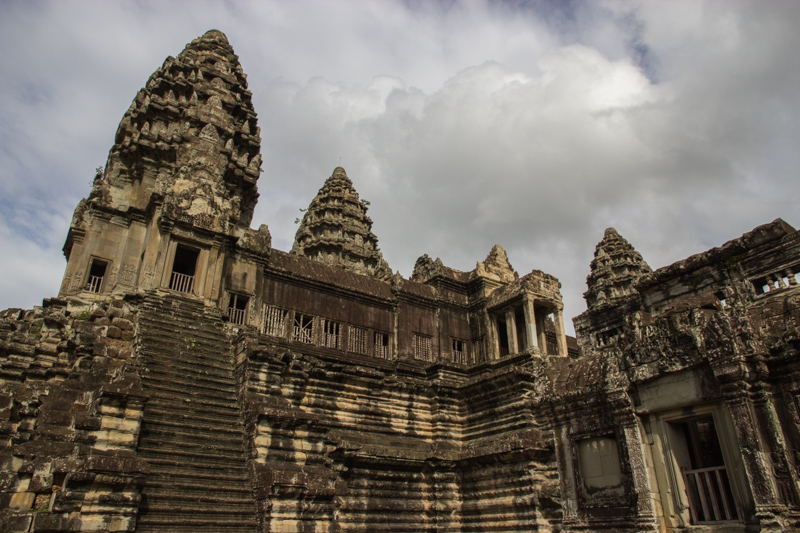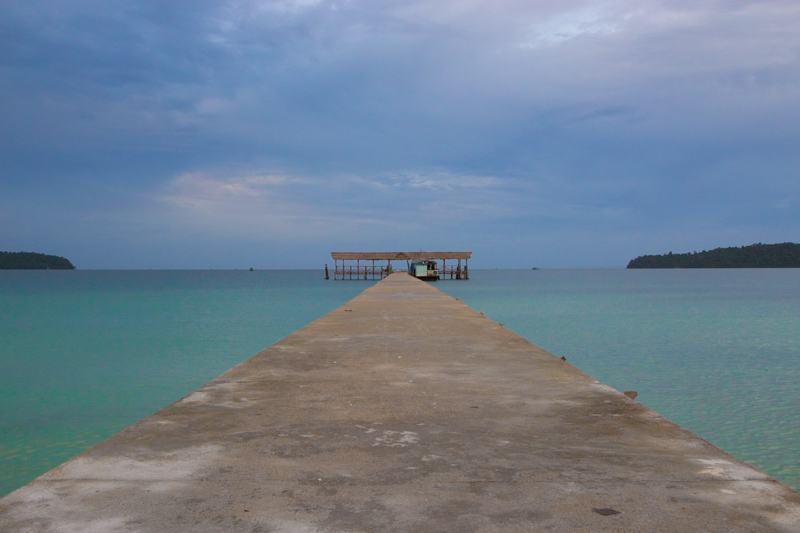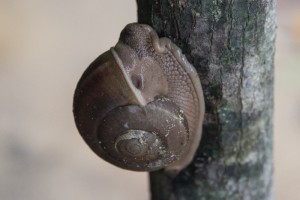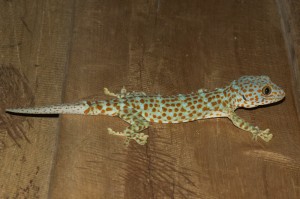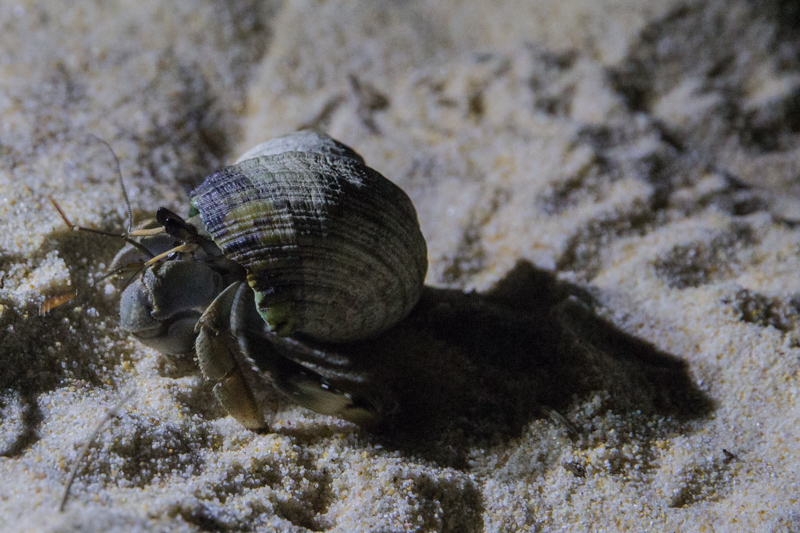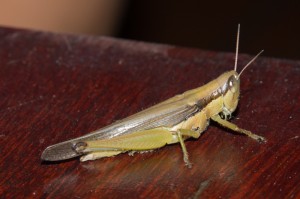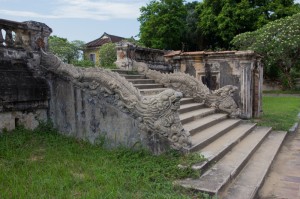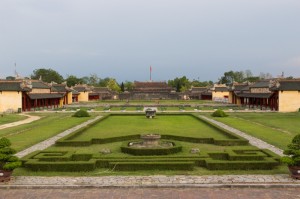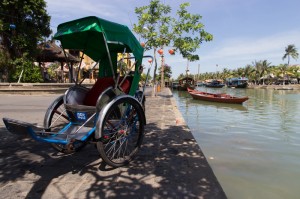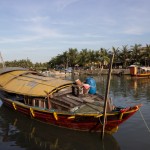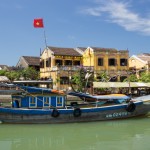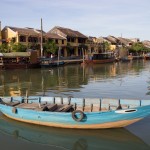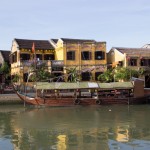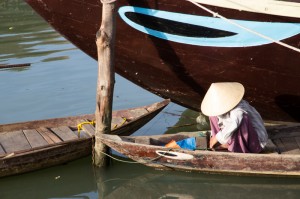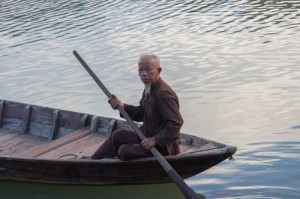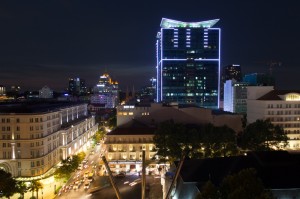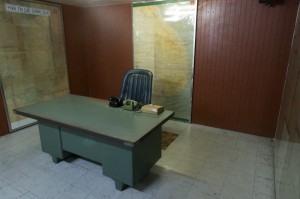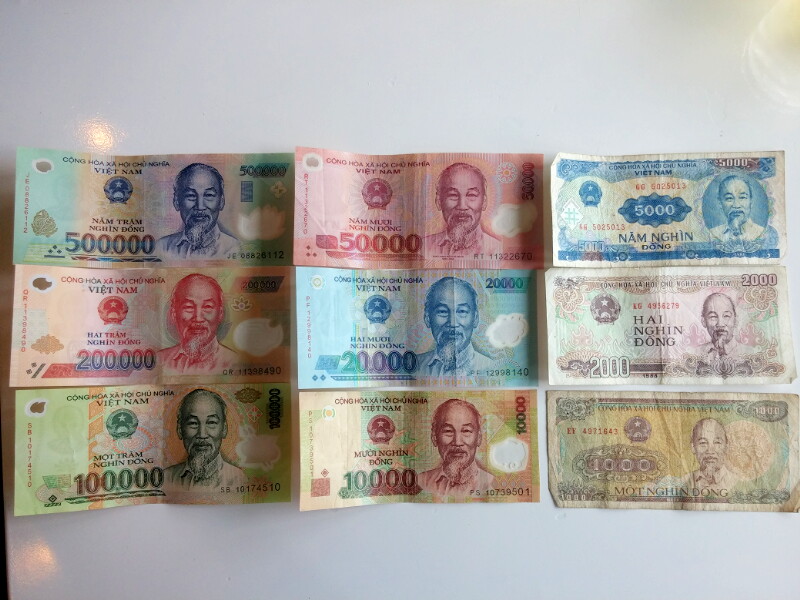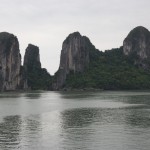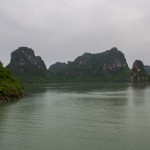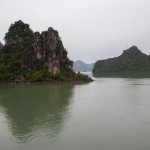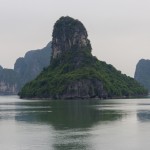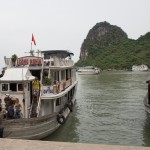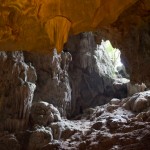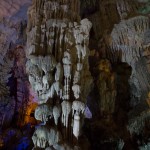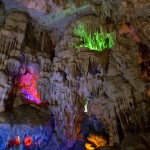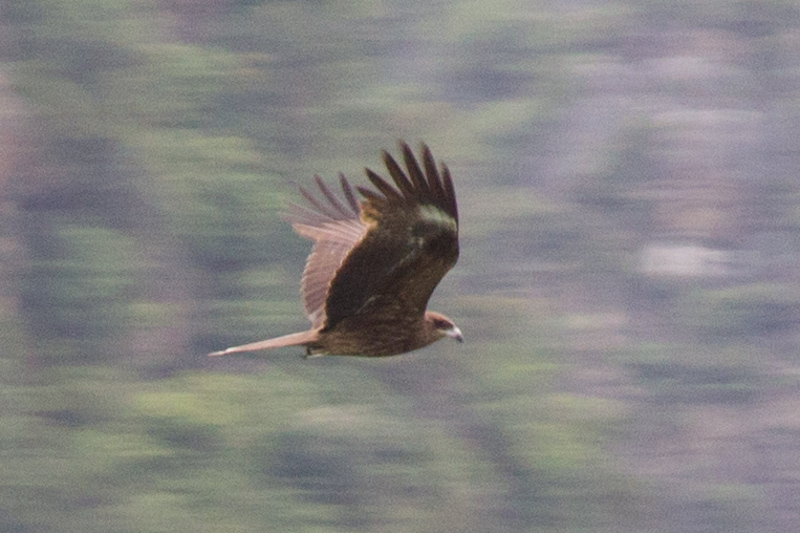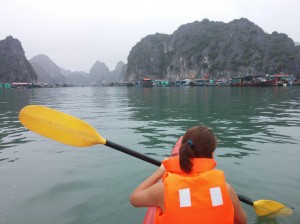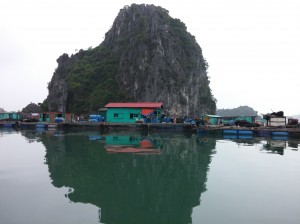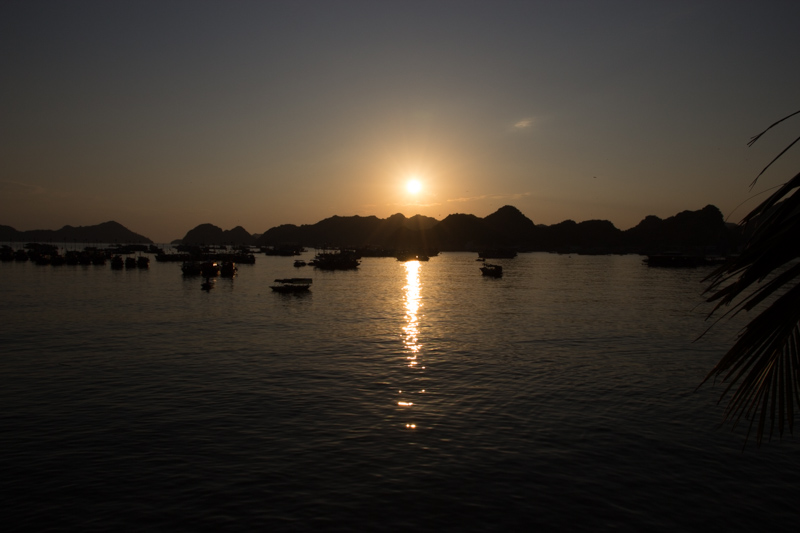Our rickshaw bowled along the smooth road and under a vast canopy of trees. We had left Siem Reap behind us and had entered the Angkor Park – home of the famous Angkor Wat and the many other ruined temples, which all together make up the largest religious site in the world. The forest was thick, and the road was effectively a speedway for the rickshaws that ferried tourists to and fro.
Built in the twelfth century, the Angkor settlements housed both the indigenous population and their living gods. Now however, the site stands in ruin. Conservation projects are slowly working to rebuild some of the temples, and we were anxious to explore for ourselves what we had heard so reverently described by other travellers.
As we continued on we would occasionally glimpse a stone tower or ancient wall between the trees, nothing of any serious size or substance though. Monkeys would stand sentinel on the side of the road, watching us pass with weary eyes. The monsoon rains had also begun to fall with force and the ground was turning into a deluge of mud. Not to be dissuaded our driver applied more throttle and ploughed on over the sliding ground.
Then, almost like the opening panning shot in a film, we broke out of the trees and ahead of us stood Ta Prom- the first of the main temples on our tour. We were struck with subtle awe as we climbed out of the rickshaw and approached the stone buildings. Trees and vines had exploded out of the structure and appeared to be dragging it back into the primordial. Getting closer we could see that the moss climbing across the walls had covered in part the intricate carvings which depicted the civilisation of the time.
Words cannot really explain the sense of awe that I felt as I explored the hidden temples, so I include a selection of photos that I hope do it justice.
Thankfully the rains began to subside, and hopping over puddles we made our way back to our driver and our next stop – The Bayon.
The Bayon was huge and by far one of the largest temples on site. As the rickshaw drew up by the entrance I felt more compelled to walk around the perimeter with my camera than immediately dive in. It was just that spectacular.
Our final stop was to be the Angkor Wat, but on the way there, we passed alongside a long wall depicting a series of marching elephants. Where the wall met a staircase, elephant heads with long tusks were carved into the stone.
Leaving behind the elephants, we passed over a long bridge, flanked by stone men pulling on the tail of a snake. This bridge led under the elephant gate, which only a single rickshaw could traverse at a time.
Up ahead the Angkor Wat appeared, a huge lake before it. Taking off on foot we crossed the causeway that led to the entrance, and into the huge complex.
